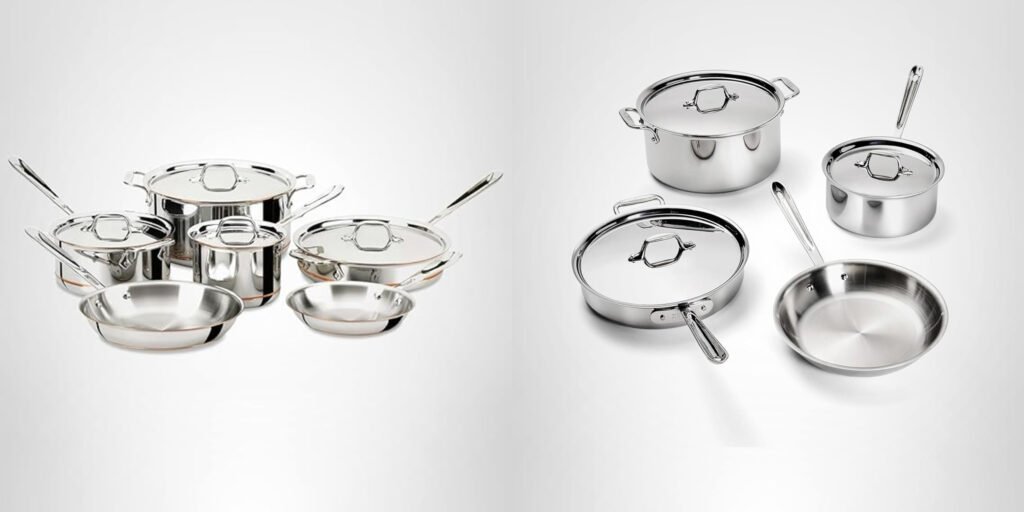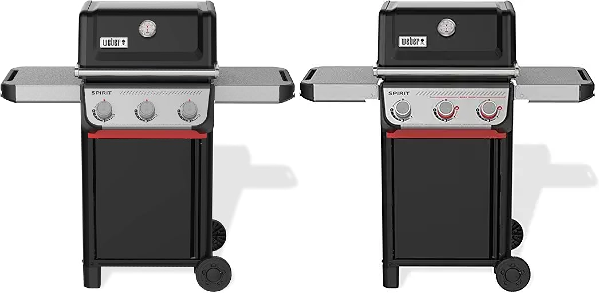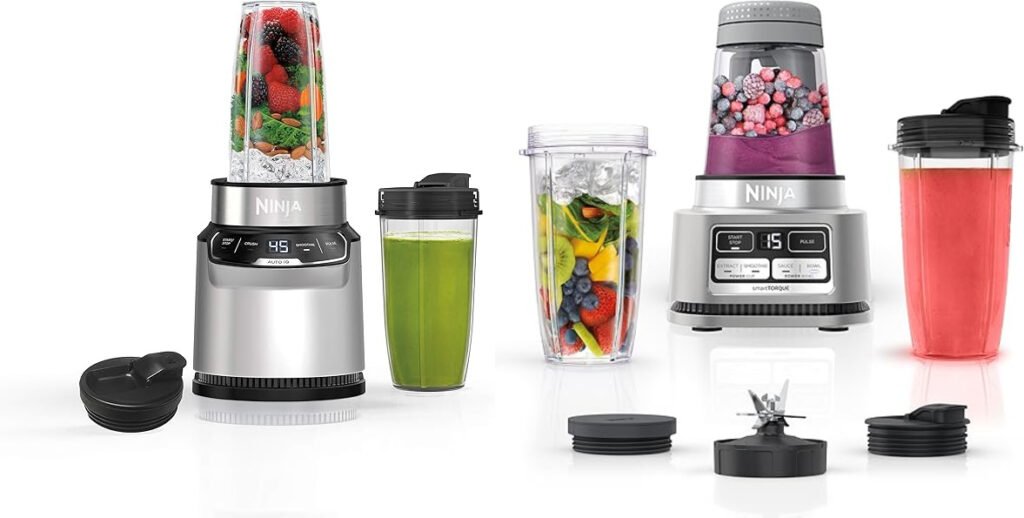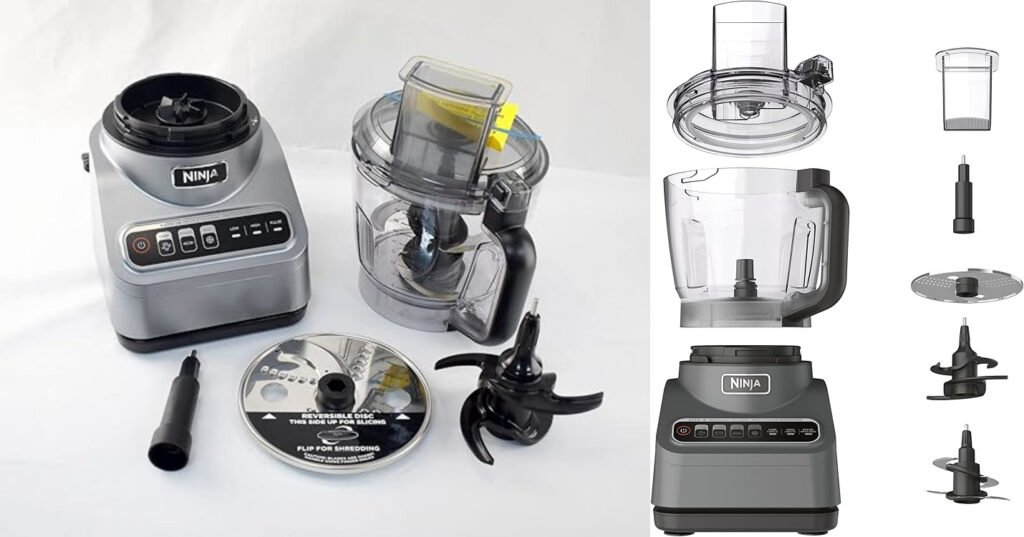Choosing premium cookware can feel like navigating a minefield of options. Among the many lines offered by All-Clad, two of the most popular are the Copper Core and the Tri-Ply (D3) Stainless Steel collections. Though both deliver exceptional quality, they cater to different cooking styles and budgets. In this comprehensive comparison, we’ll explore the key differences — performance, construction, maintenance, cost, and more — to help you decide which is the smarter investment for your kitchen.
The Main Difference: Copper Core vs Tri-Ply
The primary distinction between All-Clad’s Copper Core and Tri-Ply lines lies in their internal construction. Copper Core cookware uses a five-ply bonded construction with a copper center sandwiched between layers of aluminum and stainless steel, providing unmatched heat responsiveness and precise control. On the other hand, Tri-Ply (also known as All-Clad D3) features three layers: stainless steel on the cooking surface and exterior, with a core of aluminum for even heat distribution.
Layer Construction and Thermal Conductivity
Copper Core’s five-ply design consists of (from inside to outside): stainless steel, aluminum, copper, aluminum, stainless steel. The copper center provides superior thermal conductivity — heating up quickly and cooling rapidly — which makes it ideal for precision tasks, delicate sauces, or anything that demands tight temperature control.
In contrast, Tri-Ply’s structure of stainless–aluminum–stainless is efficient and reliable. The aluminum core spreads heat evenly, which prevents hot spots, and the stainless-steel cooking surface resists reactions with food. While it heats more slowly than Copper Core, it retains enough heat for most everyday cooking tasks — making it a workhorse in many kitchens.
Performance and Responsiveness
Because of the copper core, Copper Core cookware offers very fast heat-up times and superb responsiveness to changes in temperature. This responsiveness gives cooks fine control when reducing sauces, making candies, or sautéing delicate ingredients.
With Tri-Ply, the performance is also excellent: heat is distributed evenly thanks to the aluminum core, and the stainless surface allows for strong searing without reacting to acidic foods. The trade-off is that it’s not quite as reactive as Copper Core — ideal for cooks who don’t need lightning-fast temperature shifts but prefer steady, reliable performance.
Durability and Build Quality
Both cookware lines are built to last. All-Clad bonds all layers fully to the rim, producing pots and pans that are very robust and resistant to warping. The handles are double-riveted stainless steel and designed to stay cooler on the stove.
However, Copper Core is inherently heavier, due to the density of copper. Some users have reported it as a downside, especially for larger pieces. Also, the exposed copper band on the outside can tarnish and requires occasional polishing to maintain its shine. Tri-Ply, being simpler in design, typically demands less aggressive maintenance and can endure regular use with proper care.
Heat Retention and Control
Due to the copper layer, Copper Core provides very high thermal responsiveness — it adapts quickly when you change the heat, which is perfect for simmering, deglazing, or cooking sensitive sauces. : But because it cools down fast, it’s less suited for long, slow braises or stews that benefit from sustained heat.
Tri-Ply, while not as quick to respond, retains heat well enough to handle most daily cooking tasks. Its consistent heat distribution means less risk of scorching, especially over medium temperatures.
Safety and Compatibility
Copper Core cookware from All-Clad is compatible with all stovetops, including induction, gas, and electric. The stainless-steel construction makes it oven- and broiler-safe (up to high temperatures).
Similarly, Tri-Ply cookware supports induction (because of its magnetic stainless-steel exterior), and also works in traditional ovens. Both lines benefit from All-Clad’s limited lifetime warranty, underlining their long-term value.
Maintenance and Cleaning
If you choose Copper Core, remember that regular polishing of the exterior copper band is needed to keep it bright. Hand-washing is strongly recommended to preserve the finish and performance. For everyday messes, stainless interiors are relatively easy to clean; tougher spots may need nylon scrubbing pads or fine powdered cleanser.
Tri-Ply cookware is also best hand-washed. The stainless surface resists staining and doesn’t require copper polish, making maintenance somewhat simpler and more forgiving for regular use.
Weight and Handling
Because of copper’s density, Copper Core cookware pieces are heavier. For smaller pans (like 8-inch or 10-inch), this may be manageable, but for larger stockpots or sauté pans, the weight difference becomes more noticeable.
Tri-Ply pieces are lighter (in proportion to their size) and easier to maneuver, which many home cooks prefer for everyday tasks. This lighter feel, combined with fully bonded handles, contributes to a comfortable cooking experience.
Price and Value
It’s important to recognize that Copper Core sits at a premium price point. Because of the copper layer, these sets or individual pieces cost significantly more than Tri-Ply options. While the performance boost is meaningful, some reviewers argue that—for many home cooks—the benefits may not justify the price.
Tri-Ply (D3) offers tremendous value: you get highly durable, high-performing stainless cookware at a lower cost compared to the copper line. For day-to-day cooking, many find Tri-Ply more than sufficient without the steep investment.
Aesthetic Appeal
Copper Core cookware has a distinctive, elegant look thanks to its exposed copper band framed by polished stainless steel. This gives a premium, chef-style appearance that many find visually pleasing.
Tri-Ply pieces have a clean, timeless stainless-steel finish — mirror-polished and classic. It’s sleek, functional, and blends well into any kitchen without drawing too much attention.
Longevity and Warranty
All-Clad backs both Copper Core and Tri-Ply lines with a limited lifetime warranty. The craftsmanship—bonded layers, riveted handles, and American assembly—means both lines are built for decades of use.
That said, the higher initial cost of Copper Core makes it more of a long-term investment. Tri-Ply, with its lower price point, offers excellent longevity with less financial risk.
User Feedback and Real-World Use
Some home cooks praise Copper Core for its responsiveness, especially when making delicate sauces or performing temperature-sensitive cooking. But others note that the copper ring can tarnish, and due to its weight, some pieces feel less practical for regular use.
In online communities, opinions vary:
> “I don’t notice a big difference between the copper core, tri-ply stainless, and D5 … It’s not even enough for me to always grab the copper core.”
> “Tri-ply was revolutionary technology … copper core feels like more of a gimmick … very similar performance and longevity.”
These quotes reflect a broader sentiment: while Copper Core excels in precision, many cooks feel Tri-Ply already delivers extremely high performance without the extra weight or cost.
Who Should Choose Copper Core?
You might lean toward Copper Core if:
– Precision control is your priority (sauces, reductions, delicate dishes)
– You don’t mind the extra weight and care needed
– You appreciate the copper aesthetic and don’t mind occasional polishing
– Budget is less of a concern, and you’re investing for the long term
Who Should Choose Tri-Ply (D3)?
Tri-Ply could be the ideal choice if:
– You need reliable, everyday cookware for a variety of tasks
– You want durable stainless cookware without the premium cost
– Ease of maintenance and lighter weight matter to you
– You’re looking for a long-lasting set that gives “professional” performance at a more accessible price
Summary Comparison Table
| Feature | All-Clad Copper Core (5-Ply) | All-Clad Tri-Ply (D3) |
|---|---|---|
| Construction | 5 layers (SS-Al-Cu-Al-SS) | 3 layers (SS-Al-SS) |
| Thermal Responsiveness | Very high — fast heat-up and cool-down | Moderate — even heating, slower response |
| Heat Retention | High, but cools quickly due to copper | Good — stable, well distributed |
| Weight | Heavier (copper is dense) | Lighter relative to size |
| Maintenance | Requires polishing of copper band, hand wash | Hand wash, easier to maintain finish |
| More affordable, great value | ||
| Aesthetic | Polished SS with copper accent | Mirror-polished stainless steel |
| Oven / Stovetop Compatibility | Induction, oven, broiler safe | Induction, oven safe |
| Warranty & Longevity | Limited lifetime warranty | Same lifetime warranty |
- Experience professional cooking with this 10 piece cookware set that includes 8 inch and...
- Top of the Line Precision - Fully bonded to the rim with a core of highly conductive,...
- Design You WIll Love - Professionally polished stainless steel finish with flared edges...
- Built to Last - Trusted by generations of chefs and backed by All-Clad's Limited Lifetime...
- Bonded, Engineered, & Assembled in Canonsburg, PA- USA Since 1971.
- Complete 7 piece stainless steel set includes a 10 inch fry pan, 3-quart saucepan with...
- Fast and Even Heat - D3 tri-ply is fully bonded to the rim for professional performance &...
- Design You Will Love - D3 has a professionally polished stainless steel finish with flared...
- Built to Last - Trusted by generations of chefs and backed by All-Clad's Limited Lifetime...
- Bonded, Engineered, & Assembled in Canonsburg, PA - USA Since 1971
Pros & Cons Summary
Copper Core – Pros
- Excellent responsiveness and precise temperature control.
- Beautiful copper-accented design.
- Long-lasting, premium construction.
- Compatible with all stovetops including induction.
Copper Core – Cons
- Heavier than tri-ply alternatives.
- Higher cost.
- Requires occasional copper polishing.
- Hand washing preferred to preserve finish.
Tri-Ply (D3) – Pros
- Even, consistent heat distribution.
- Lighter compared to copper-core pieces.
- Easier maintenance — no copper band to polish.
- More budget-friendly while still offering professional performance.
Tri-Ply (D3) – Cons
- Slower to respond to temperature changes.
- Not quite as refined for ultra-precise cooking as Copper Core.
- Still requires hand washing to maintain longevity.
Final Verdict: Which One Should You Pick?
If you’re a serious home cook or professional who prioritizes **precision, responsiveness, and performance**, and you’re willing to invest more — Copper Core is likely worth it. Its rapid heat transfer and fine control make it ideal for tasks like sauce reductions, delicate searing, or temperature-sensitive recipes.
However, if you’re looking for **durable, reliable, and well-performing cookware for everyday use**, the Tri-Ply (D3) line is a fantastic choice. It delivers great heat distribution, is lighter, easier to maintain, and comes at a more accessible price. For many cooks, its performance is more than adequate.
Ultimately, both lines reflect All-Clad’s hallmark quality and craftsmanship. Your decision should come down to your cooking style, how much you want to invest, and how much weight and maintenance you’re willing to handle.






